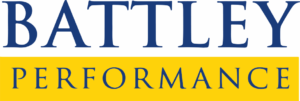Director and C-Suite Alert: Hidden Risks to Effective Decision-Making
by Susan Battley
Boards and senior management are navigating through unprecedented levels of economic, social, and political volatility, with leaders having to react and respond quicker than ever.
Looking ahead, effective decision-making requires the acquisition and processing of extensive relevant information for leadership teams to make accurate predictions and scenario models. Investments in technology have been a key development in recent years for gathering data and intelligence to make better informed decisions.
However, I frequently note hidden decision risks operating in the boardroom and C-suite in the form of cognitive bias, a well-researched phenomenon among social psychologists and behavioral economists. Cognitive biases are mental tendencies that cause our brains to come to incorrect conclusions. They are a common type of cognitive shortcut, or rule of thumb, that enables us to process information quickly. But this rapid information processing can at times generate errors in judgment and memory, and drastically skew the reliability of statistical and anecdotal data. Because cognitive biases typically operate outside of individual – and even group – conscious awareness, they can exist as a hidden risk and sabotage the best analytics, business intelligence or expertise.
Common cognitive biases and their risks
Among the most common cognitive biases I have seen impacting board and C-suite decisions are the following:
Anchoring is the tendency to rely too heavily – or “anchor” – on a past benchmark, business tactic or process, or piece of information when making decisions. The risk can be over-reliance on past successes and solutions that no longer support innovation or competitive advantage.
Confirmation bias involves the tendency to seek out information that supports our own preconceived notions and preferences. The risk here is that success-critical but contradictory data is ignored, downplayed or dismissed as irrelevant or immaterial.
Recency bias is the tendency to weigh recent events more than earlier ones, with the risk being potentially distorting interpretation of critical events, results and their contributing factors. This bias also appears frequently with senior talent selection, when decision makers put greater positive or negative weight on the last candidate interviewed.
Social comparison bias describes the tendency, when making hiring decisions, unconsciously or consciously to favor candidates who do not compete with your own particular strengths. This bias can contribute to subpar recruitment of top directors and senior executives.
Effective decision making: can you trust your brain?
In conclusion, when high-stakes decisions are on the table, it is vitally important that leaders have a robust process or mechanism in place to test their decision quality for accuracy and objectivity. Developing well defined executive selection criteria, tabletop exercises, and stress testing projections and “accepted wisdom” are some approaches to preventing or neutralizing cognitive biases in the boardroom and C-suite. Also consider engaging a behavioral scientist as part of your decision risk mitigation efforts, most especially when the presenting context involves major financial, operational or reputational assets.
Copyright © Susan Battley 2023. All rights reserved.
